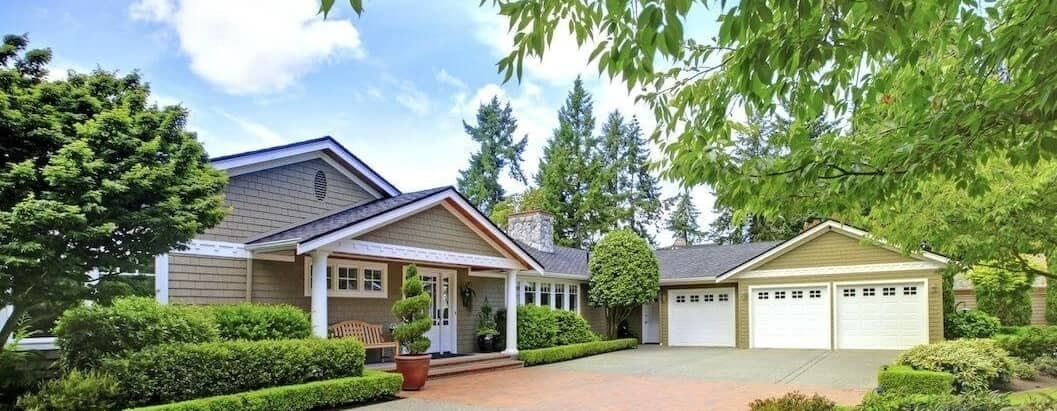
Mortgage Default: Everything You Need To Know
For any number of reasons, homeowners may struggle with their mortgage payments. Falling behind on payments or missing payments, though, can lead to what’s called mortgage default. Once this happens, your house can go into foreclosure, and you may lose your home altogether.
Below, you’ll find everything you need to know about mortgage default, how to avoid it and what you can do to help yourself if you’re in it.
What Happens When You Default On A Mortgage?
Mortgage default occurs when a homeowner fails to uphold the agreed-upon terms defined in their promissory note or deed of trust they signed when taking out their mortgage. It’s possible to default on a mortgage in a few ways, the most common being if a homeowner stops making monthly payments.
Other ways to break a home loan contract and send a mortgage into default include not paying property taxes or homeowners insurance, transferring the title to a new owner without the lender’s permission, or severely damaging the property and value of the home.
Defaulting on a mortgage can result in one or both of the outcomes described next.
The Lender Accelerates The Debt
If you’re 30 days overdue on your last mortgage payment, the lender can demand payment on the outstanding balance by enacting an acceleration clause. Most lenders will send you a letter before they accelerate the debt to give you a chance to catch up.
Your Home Goes Into Foreclosure
If you’re unable to pay the outstanding balance, the lender’s next step is foreclosing on the home. This process usually isn’t instantaneous – federal law requires lenders to wait 120 days before beginning the foreclosure process (though the process varies from state to state).
Once your lender completes the foreclosure process, they’ll take control of the property and you’ll need to leave your home. The good news? You can take various steps to keep this process from happening.
See What You Qualify For
Congratulations! Based on the information you have provided, you are eligible to continue your home loan process online with Rocket Mortgage.
If a sign-in page does not automatically pop up in a new tab, click here
How To Avoid Mortgage Default
Check out the following ways to avoid defaulting on your mortgage.
Evaluate Your Finances
As soon as you start having issues paying your mortgage, come up with a plan. Whether that means finding a temporary or second job to help with income flow, evaluating your spending habits or dipping into savings, be proactive about solving the problem.
Look Into Refinancing
If you think you’re heading for a default, consider refinancing your mortgage. When you refinance, you take out a new mortgage that pays off your old one. Your new loan can potentially come with a lower interest rate, reducing your monthly payment and making repayment of your mortgage more manageable.
Borrowers in mortgage default won’t qualify for refinancing, so you’ll want to act fast if you’re having trouble making payments.
Work On A Plan With Your Lender
If you can predict you’re going to miss a few payments, reach out to your lender now and let them know what’s going to cause the delinquency, when you expect to be back on track again and how much you can pay in the meantime. Many lenders are willing to work with you if you communicate with them ahead of time.
Remember, lenders don’t want to accelerate mortgages or foreclose on homes. Most lenders would rather work with you to find a way to keep you from defaulting on your mortgage.
Take the first step toward the right mortgage.
Apply online for expert recommendations with real interest rates and payments.
Solutions For A Mortgage In Default
If your mortgage is already in default, it’s still possible to keep your home.
Here are our recommendations for solving your mortgage default crisis:
1. Work Toward Mortgage Reinstatement
It’s possible to reinstate your mortgage during the default period and avoid moving into foreclosure. Reinstating your mortgage means moving it out of default and reactivating the former home loan agreement.
To reinstate your mortgage, you’ll need to pay the amount you’re behind on payments, plus any fees or interest, including fees and costs incurred on the loan through the end of the reinstatement period. Talk with your lender to confirm the full payment necessary to have your mortgage reinstated.
This is a great solution if you’ve been without work for a short amount of time or fallen into financial hardship due to bills or other commitments.
2. Talk With Your Lender About Forbearance Options
Your lender might agree to offer you forbearance on your home loan, meaning you may be able to take some time to find a financial solution and keep your home.
Mortgage forbearance is a binding mortgage agreement made between you and your lender. The lender promises not to foreclose on your home and will give you a set number of days or months where payment is paused or temporarily reduced. After this period, you’ll be required to not only continue your mortgage payments but also repay the past-due balance per an agreed-upon plan.
This can be a workable solution if you’re unemployed or facing a temporary financial cut. Just make sure you use the grace period to save every penny you can and plan how you’ll pay back the full amount once the forbearance period ends. There may be payment options post forbearance, such as a repayment plan or modification, which we'll discuss below
3. Reach Out To HUD
If your lender won’t agree to forbearance – or you don’t think this is the right solution for you – the Department of Housing and Urban Development (HUD) might be able to help. HUD has certified loan and housing counselors who can review your financial situation and mortgage default status to come up with a solution that benefits both you and your lender.
These foreclosure prevention counselors will see if any state or federal programs are available to help you overcome this hurdle, and these counselors can even reach out to your lender on your behalf to discuss options.
Enlisting a HUD counselor can be a terrific way to resolve your mortgage default, particularly if you don’t feel comfortable talking with your lender.
4. Decide On A Repayment Plan
Another option is to come up with a repayment plan with your lender. This is different from forbearance because you won’t be granted a grace period where payments are paused or temporarily reduced. Instead, you’ll restart your usual mortgage payments and pay an additional amount to make up the balance you owe.
Look at your finances and determine how much you can afford to pay in addition to your usual payment. Then reach out to your lender and discuss how you’ll make up the past-due balance.
Your lender will work with you to create a repayment plan that fits your budget, but reaching out and taking the initiative to resolve your defaulted mortgage goes a long way.
5. Consider A Loan Modification
A loan modification is intended to offer permanent relief to people having trouble making their mortgage payment. It can take the form of one or a combination of these options:
- Your interest rate can be changed so it’s based on a modification interest rate index from Freddie Mac (this would be close to current market rates).
- The term of your loan can be extended to 40 years. Reamortizing your payments over a longer term means it’ll take longer to pay your loan off, but your loan will likely be more affordable. You can always allocate extra toward the principal on your mortgage to pay it off in the same amount of time as your original loan term.
- If your mortgage is underwater – meaning you’re behind on your payments and owe more than your home is worth – your servicer has the option to set aside some of the excess principal. No interest is charged on that excess, and it’s due when the rest of the loan is paid off.
- The modification is reported on your credit, so there’s the potential for it to affect your credit score and ability to refinance or purchase a new house. It still looks better on your credit report than a foreclosure, however, and you get to stay in your home.
A loan modification shares some similarities with a refinance, but a lender won’t allow you to refinance once you’re in mortgage default.
6. Opt For A Short Sale
A short sale might be worth considering if you can’t afford your home and you need to permanently stop making your mortgage payments. A short sale occurs when you sell your home for less than the amount owed to your lender, which allows you to get out of your mortgage.
You’ll start the process by listing your home on the market as a potential short sale property. Once you have an offer, you’ll take this offer to your lender to see if they’ll accept the short sale. If they do, the money the buyer pays for the home will be applied to your mortgage balance.
You won’t make any money on a short sale, and you’ll need to get your lender to agree to the terms. A short sale can be one way out of a sticky situation if you know you can’t afford your mortgage any longer.
7. Deed In Lieu Of Foreclosure
A deed in lieu of foreclosure comes about when you voluntarily deed your house back to your lender to avoid foreclosure. While you still need to find a new place to live, this has a couple of distinct advantages over a traditional foreclosure process.
First, it’s important to remember that foreclosure is a very public process in many ways. Even without the spectacle of a forced eviction, you’ll find notices on your doorway, for example. A deed in lieu avoids that embarrassment.
Second, if you’ve come to the conclusion there’s no way to stay in your home or complete a short sale, this makes more sense than a foreclosure from the perspective of your future mortgage prospects. If you want a conventional loan, you’ll have to wait 7 years after a foreclosure. With a deed in lieu, the waiting period is just 4 years.
The Bottom Line: Avoid Mortgage Default If At All Possible
Going into mortgage default can result in you losing your home. Luckily, there are plenty of ways to avoid this scenario and not go into foreclosure. Reach out to your lender to find out how willing they are to work with you if you’re experiencing financial issues. To determine what you can afford and how you’d like to proceed, you should look at your finances carefully before talking with your lender.
Heading for a possible default and want to avoid it? Check out your refinancing options with Rocket Mortgage®.
Find out what you can afford.
Use Rocket Mortgage® to see your maximum home price and get an online approval decision.

Miranda Crace
Miranda Crace is a Senior Section Editor for the Rocket Companies, bringing a wealth of knowledge about mortgages, personal finance, real estate, and personal loans for over 10 years. Miranda is dedicated to advancing financial literacy and empowering individuals to achieve their financial and homeownership goals. She graduated from Wayne State University where she studied PR Writing, Film Production, and Film Editing. Her creative talents shine through her contributions to the popular video series "Home Lore" and "The Red Desk," which were nominated for the prestigious Shorty Awards. In her spare time, Miranda enjoys traveling, actively engages in the entrepreneurial community, and savors a perfectly brewed cup of coffee.
Related Resources
Viewing 1 - 3 of 3